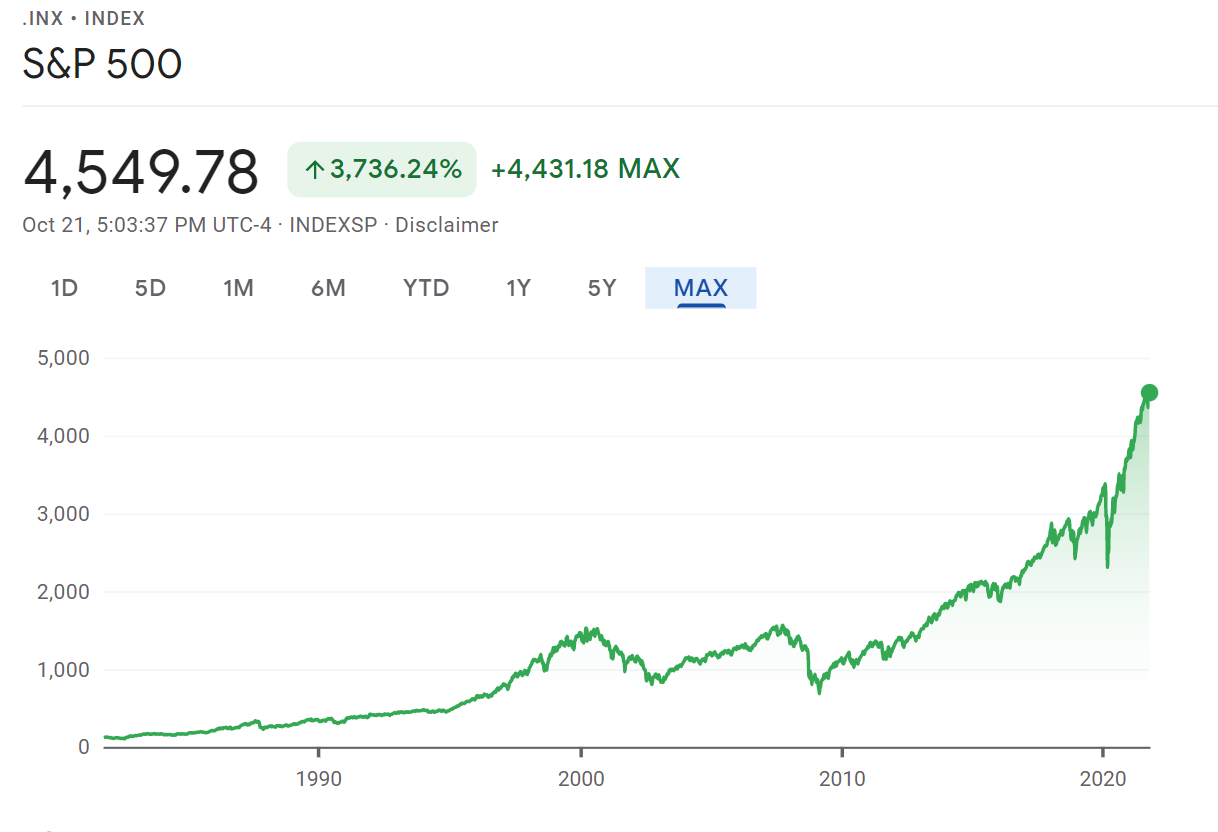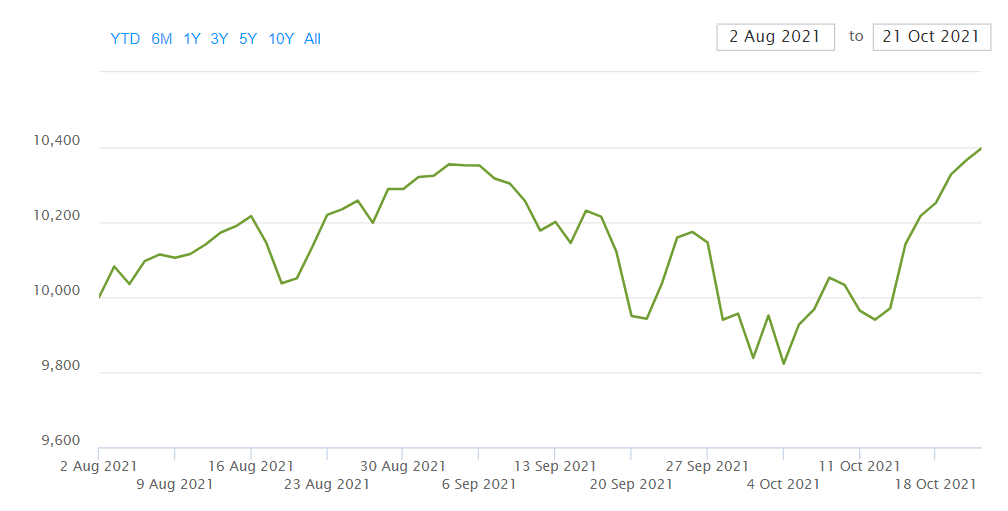
Over the long run, the stock market tends to go up. Zoom in closer however and you’ll realise that the market frequently zigs and zags on its journey upwards.
That’s perhaps the most important thing for all investors to realise – stocks don’t follow a steady, straight path up and up.
Even with a diversified portfolio of stocks, there are times when volatility will strike, although such a portfolio is far more likely to go up more and for longer, than it goes down.

Why it pays to stay invested
Let’s say you’re invested in a S&P 500 index fund like the iShares Core S&P 500 UCITS ETF (CSPX), which represents the US stock market as a whole. Your portfolio value would have gone down in September and early October during those volatile weeks.
With terrifying headlines like “Markets Are Climbing a Wall of Worry From Evergrande to Delta and Inflation” from CNN, it’s only normal to be afraid when everyone else is. And when fear hits, panic selling is the most common response.
But, if you had bravely looked past all the scary headlines and market doomsayers, keeping your eyes on your long-term investing goals, you would have realised that the dips were just that.

As of 21 October 2021, the ETF had recovered all its losses and ended up even higher than early September 2021 levels.
So, kudos to you for sticking to your guns. If you had succumbed to panic selling, you would have crystallised what were just losses on paper. But since you didn’t, go ahead and congratulate yourself for staying true to your long-term investing plan.
Why short-term corrections happen
Markets can tumble for a wide variety of reasons. In the short term, negative news – or even the threat of one – can cause fear and affect investor sentiment, triggering a market sell-off.
These negative surprises can come in the form of earnings disappointments, inflation worries, a more hawkish Fed, political instability, geopolitical tensions, and of course, the resurgence of a global pandemic.
Troubling as such headlines are, it’s important to remember that short-term pullbacks don’t necessarily threaten your long-term investment plan.
That’s not to say all stocks are impervious to market shocks. For example, Blackberry and Kodak come to mind as stocks affected by secular shifts in technology. Or Pets.com as an example of a company that had no real business model.
But if you’re invested in a globally diversified portfolio of various assets, such as Syfe Core portfolios, negative sentiment is unlikely to fundamentally change any part of your investment strategy.
In fact, it may even be an opportunity to accumulate more investments at a discount from recent levels.
Market dips are normal and to be expected
Seeing that we’re always going to have negative news, corrections are a matter of when, not if.
Nobody knows when the next correction will happen. It could take place tomorrow, next week, next month, or even next year.
But history shows that markets always recover after a decline. We’ve seen it happen with the 2008 financial crisis, the 2020 pandemic crash, and most recently, the September and October market pullback.
So the next time markets turn choppy, take a deep breath and think back to how you acted this time round.
Recall how you understood that investing is a long-term endeavor that’s measured in years, not months. Remember the feeling of focusing on your future goals, whether that’s your child’s university education or your own retirement spending. As you did before, recognise that short-term corrections don’t derail your goals – unless you let them.
Ultimately, pullbacks and corrections will happen many more times before you reach your goals. The recent dip was a minor setback with a less than 5% decline. Over a multi-year investment horizon, larger corrections (a decline of 20% or more) will also happen. Despite the increased magnitude, your investment plan shouldn’t change if your goals and risk tolerance have not.
Think you won’t be as comfortable with larger market swings? It may be a signal to reconsider your asset allocation and pivot to portfolios with a higher exposure to bonds and gold, depending on your personal risk appetite.
For long-term investors, market corrections are merely tiny blips on a multi-decade investment journey. The key is to stay invested. Historical data shows that doing so over time is the most reliable way to build wealth.



You must be logged in to post a comment.